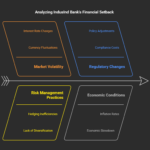Market sentiment, often referred to as the mood of the market, plays a vital role in shaping the investment landscape. Understanding and judging market sentiment is crucial for investors as it can significantly impact the performance of their investments. In this article, we will delve into why assessing market sentiment is important and provide a comprehensive guide on how investors can effectively go about doing so.
Definition of Market Sentiment
Market sentiment represents the overall attitude and feeling of market participants, including investors and traders, towards a particular financial market or asset. It is an emotional and psychological aspect of trading that can greatly influence the direction of prices. Market sentiment can range from extreme optimism to deep pessimism, and it is a reflection of how investors perceive the current economic and financial conditions.
Why It Matters for Investors
Understanding and gauging market sentiment is vital because it affects investment decisions and strategies. When sentiment is overwhelmingly positive, it can drive stock prices higher, even if the underlying fundamentals don’t fully support such increases. Conversely, a negative sentiment can lead to market downturns, potentially creating buying opportunities.
II. Types of Market Sentiment
Bullish Sentiment
Bullish sentiment indicates a positive outlook on the market or a specific asset. Investors with a bullish sentiment believe that prices will rise, leading to potential profits.
Bearish Sentiment
Conversely, bearish sentiment reflects a negative outlook, where investors expect prices to fall. A bearish sentiment can lead to a reluctance to invest or selling of assets.
Neutral Sentiment
Neutral sentiment suggests a lack of strong conviction either way. It often occurs during periods of uncertainty or when market participants are waiting for more information.
III. The Role of Market Sentiment
Influence on Stock Prices
Market sentiment can override fundamental analysis in the short term. Even if a company reports strong earnings, if market sentiment is bearish, its stock price may still decline.
Psychological Factors at Play
Human emotions, such as fear and greed, heavily influence market sentiment. Understanding these emotions can help investors make more informed decisions.
IV. Tools for Analyzing Market Sentiment
Social Media Sentiment Analysis
Monitoring social media platforms can provide insights into public sentiment. The frequency and tone of discussions about certain stocks or the overall market can be telling.
Sentiment Indicators
There are numerous sentiment indicators available, such as the Volatility Index (VIX) and the Put/Call Ratio. These tools can help investors gauge overall market sentiment.
News Sentiment Analysis
Analyzing news headlines and articles can reveal market sentiment. Positive news might lead to a bullish sentiment, while negative news can drive bearish sentiment.
V. Steps to Judge Market Sentiment
Monitor News and Media Coverage
Staying updated with financial news and media outlets can provide a real-time sense of market sentiment. Pay attention to the tone of articles and the sentiments expressed.
Analyze Social Media Trends
Keep an eye on trending topics and discussions on social media platforms like Twitter and Reddit. These platforms often capture the sentiments of retail investors.
Evaluate Sentiment Indicators
Regularly check sentiment indicators to get an objective view of market sentiment. These tools can help identify shifts in sentiment.
Consider Expert Opinions
Listening to expert analysis and opinions from financial experts can offer valuable insights into market sentiment.
Watch for Major Events and Earnings Reports
Market sentiment can quickly change in response to significant events or corporate earnings reports. Be prepared for potential shifts and have a strategy in place.
VI. The Perplexity of Market Sentiment
The perplexity of market sentiment lies in its ability to change rapidly. Investors must be adaptable and respond quickly to shifts in sentiment to protect their investments.
VII. Burstiness in Market Sentiment
Market sentiment can experience bursts of intense positivity or negativity. These moments require investors to act swiftly and adjust their investment strategies accordingly.
VIII. The Art of Balancing Specificity and Context
Investors must strike a balance between specific, data-driven analysis and a broader understanding of the market’s context to make well-informed decisions.
IX. Crafting Engaging Paragraphs
To engage readers effectively, it’s essential to present information in a clear, engaging, and reader-friendly manner.
X. A Conversational Approach
Writing in a conversational style makes complex topics more approachable, engaging, and easier to understand.
XI. The Active Voice
Using the active voice in writing can make content more compelling and reader-focused.
XII. The Importance of Keeping It Brief
Investment content should avoid unnecessary jargon and focus on delivering information concisely.
XIII. Rhetorical Questions
Incorporating rhetorical questions can stimulate readers’ thinking and encourage deeper engagement with the content.
XIV. Analogies and Metaphors
Analogies and metaphors can simplify complex financial concepts, making them more accessible to a broader audience.
XV. Conclusion
In conclusion, market sentiment is a dynamic force that can significantly impact investment decisions. To become a successful investor, it’s essential to understand the different types of sentiment, employ tools for analysis, and respond effectively to changes in sentiment.











